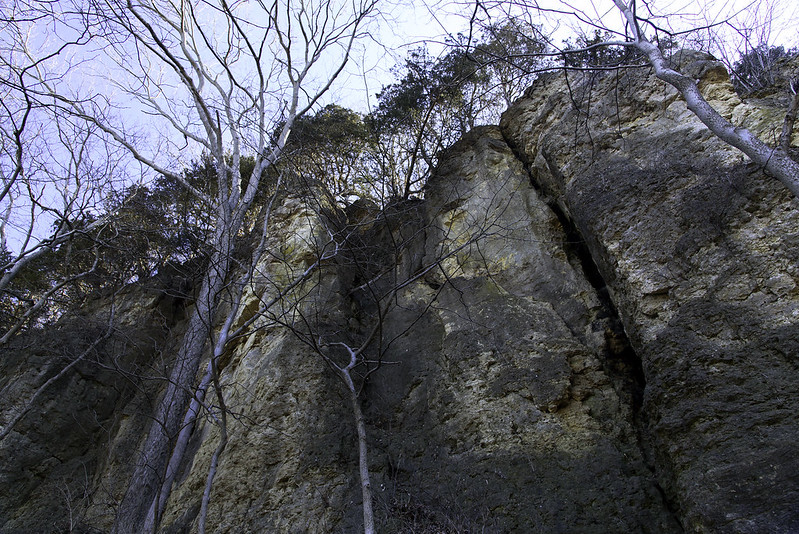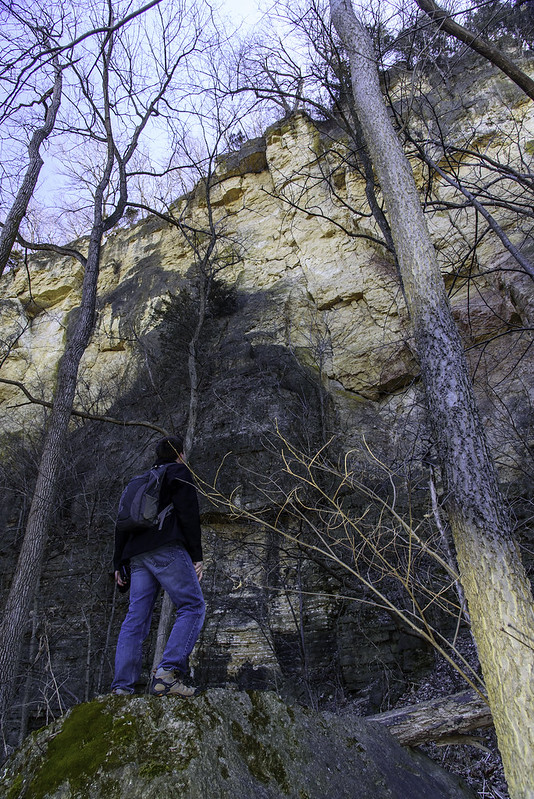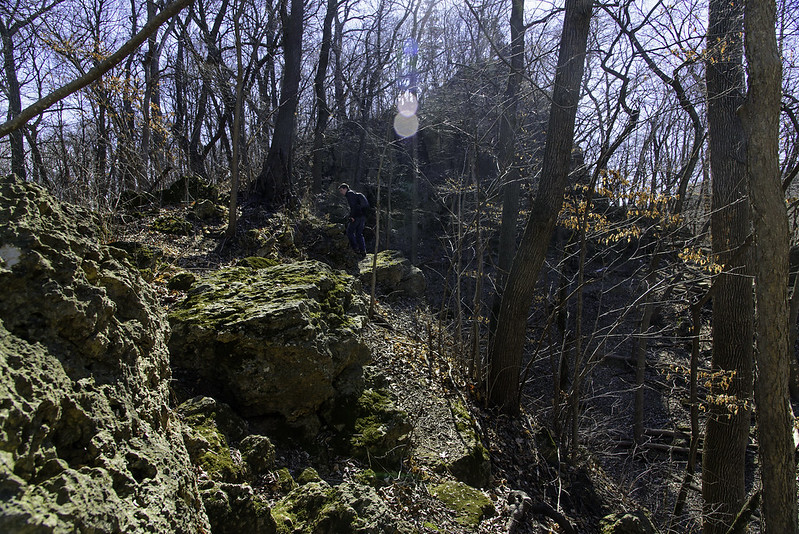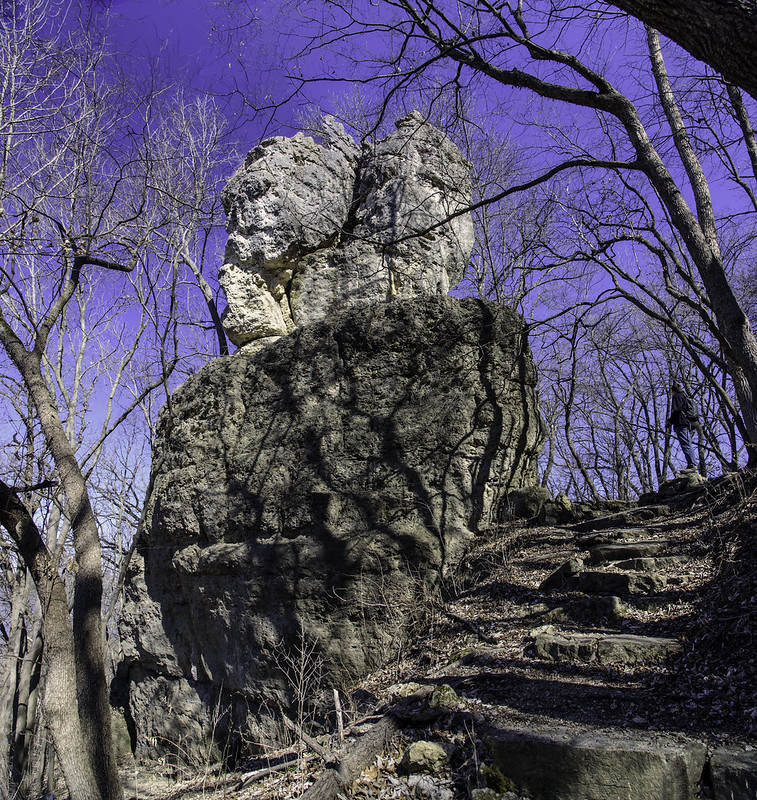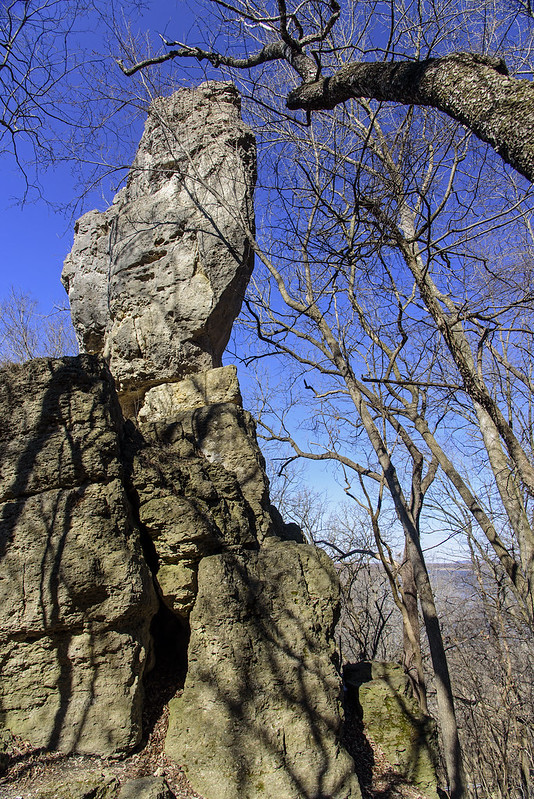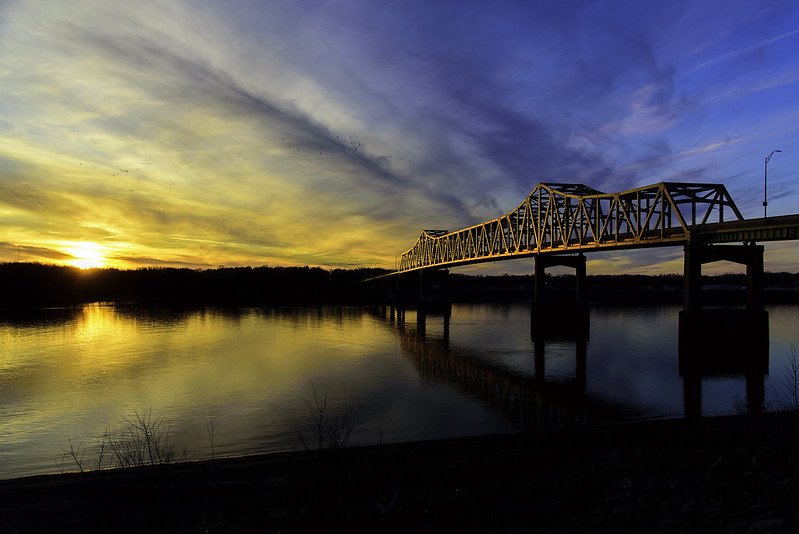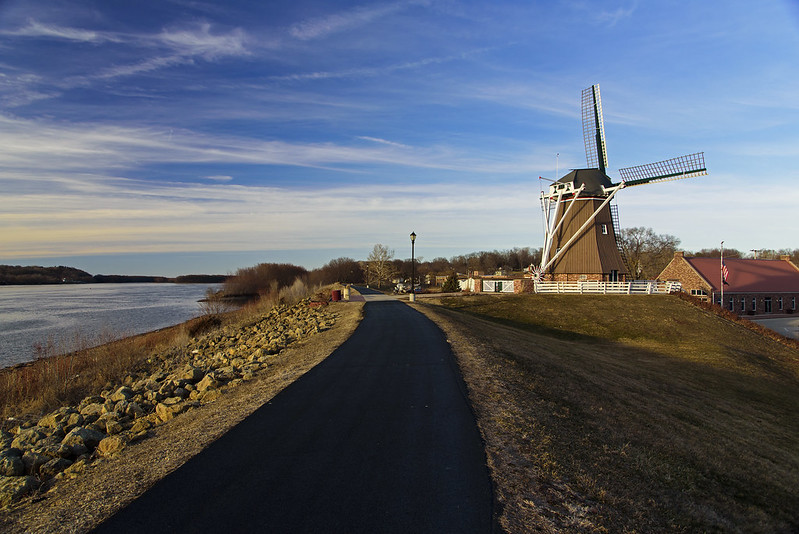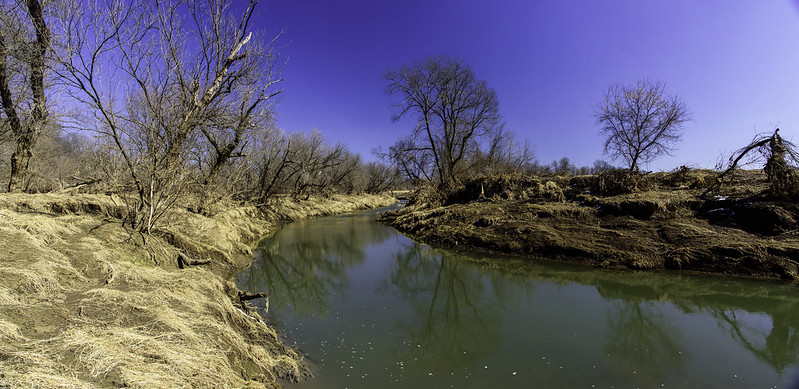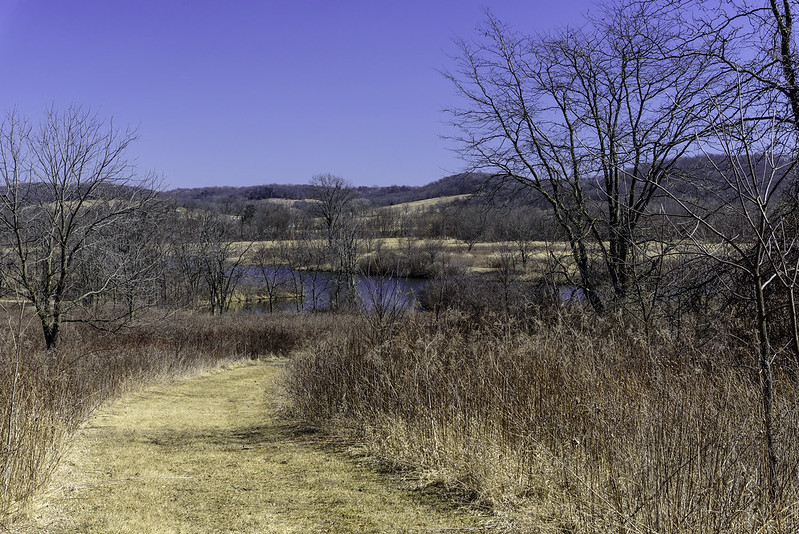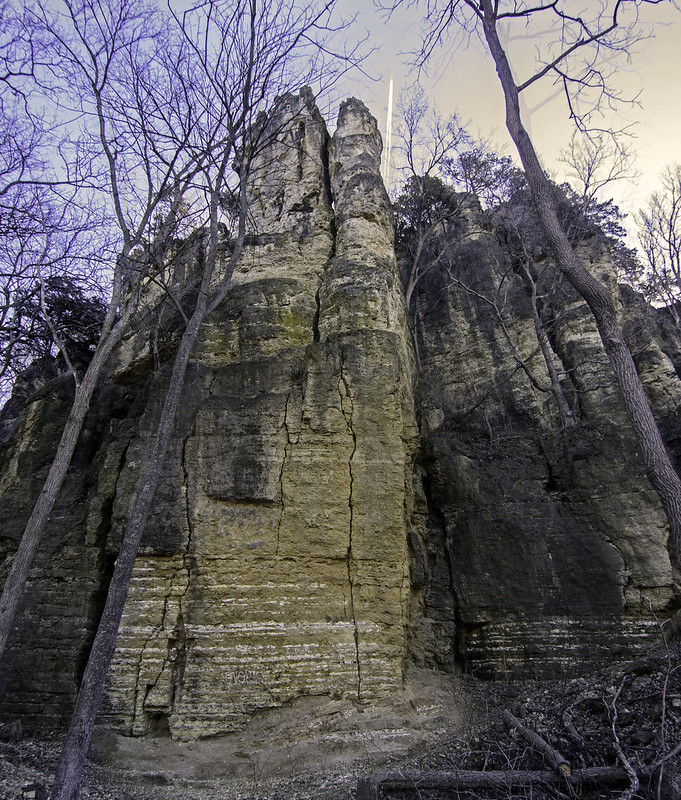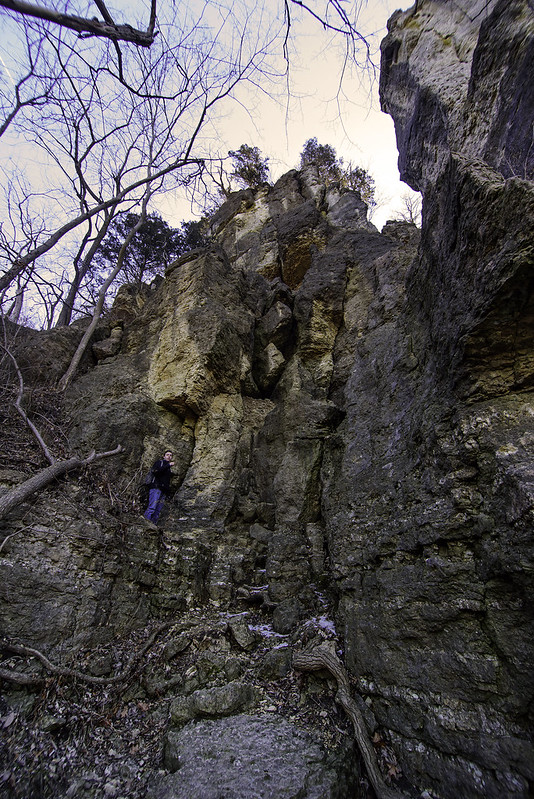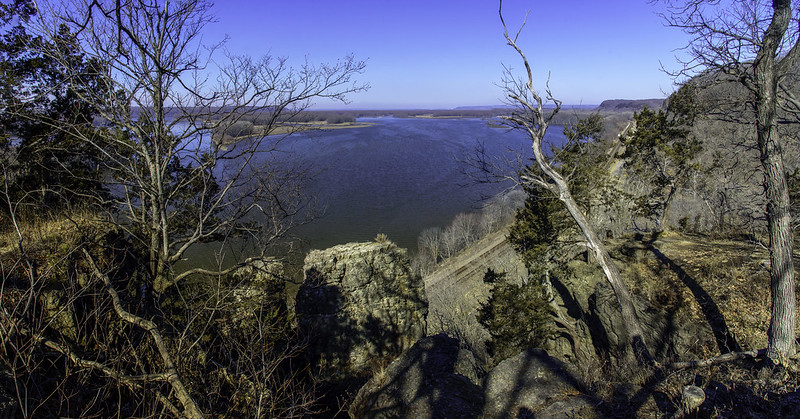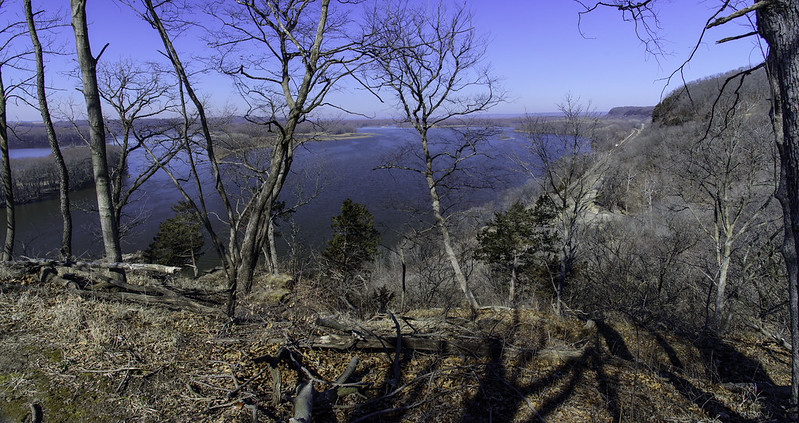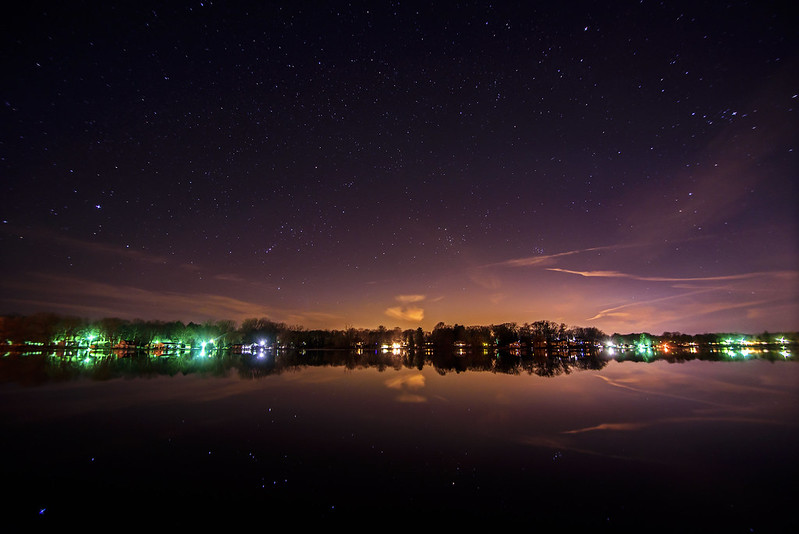
Following a narrow trail worn into the side of the sloping ground at the foot of the tall, stone bluffs, we eventually came to Upton's Cave. Driving past this area in winter helped us find this cave; every other visit was in the warmer months where the dense foliage obstructed the view of the cave.
Not a very large or deep cave, it was interesting to explore it a bit. The only worry was a cave-in due to the explosive demolition of the nearby bridge to Sabula, Iowa. The cave itself was about 20 feet deep, then it narrowed and the opening shrank, but again opened up to another small room.
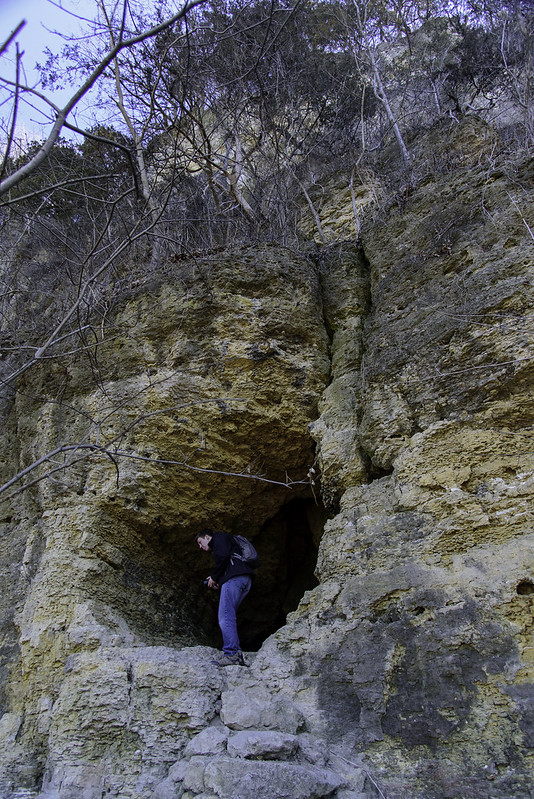
It seems this cave has an interesting history. It's been said the cave is named after a man who hid from attacking Native Americans. The very small settlement nearby the cave was attacked, and Mr. Upton was out hunting at the time. He hid inside for a couple of days, until it was safe to head out.
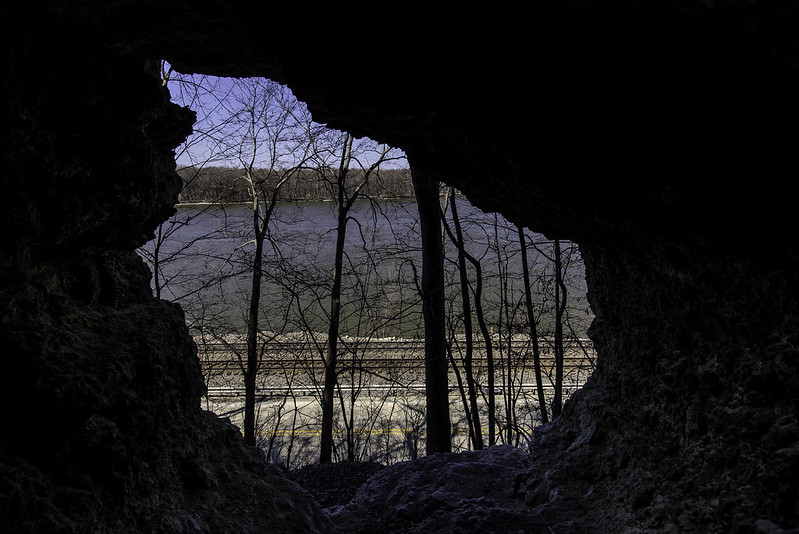
Locals have visited the cave for decades, and surprisingly, there is little trash or graffiti inside. The Mississippi River is in view the entire hike along the base of the bluffs, but the view of the river from inside the cave is somehow more striking.

